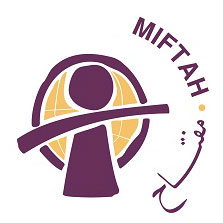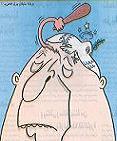Introduction
Nations embroiled in nationalist conflicts tend to adopt narratives that support the righteousness of their struggle and which accentuate the negative traits and intentions of the other side, as well as its responsibility for the ongoing suffering and for the absence of a solution. This is how the Palestinian-Israeli conflict is covered by media outlets on both sides, often in mirror images, with each side presenting an opposite story. For example, the Palestinian media narrative emphasizes the occupation—whose victims are the Palestinians—and paints the government of Israel as aggressive, opposed to peace and responsible for violent events in the region. On the other side, Israeli media outlets emphasize the violent and terrorist foundations of the Palestinians’ conduct and their unwillingness or inability to reach a solution. The Israelis, in this telling, are the victims of a conflict in which they are not to blame. Beyond these different perceptions and interpretations of reality, essentially similar patterns of coverage can be found on both sides, which de-legitimize and dehumanize the other. These patterns of coverage heighten mutual suspicions in both nations, fan the flames of the conflict and make it harder to find a solution.
Recognition of the media’s profound influence on the conflict has led the Israeli organization Keshev and the Palestinian organization MIFTAH to work together from both sides of the conflict in order to try to change how the conflict is depicted in the media discourse in both nations. This is done in the hope that such cooperation may lead to more balanced, fair and comprehensive coverage and, perhaps, as a result, a better reality.
This practical guide to teaching critical reading of news materials arises from a unique cooperative project that has been carried out continuously since 2004. In this joint project Keshev and MIFTAH each analyze news coverage in the major media outlets on their “own side” and attempt to influence journalists and editors to change patterns of coverage that are problematic and biased.
Two parallel goals have guided the creation of this guide. First, it is designed to instill skills for critical reading, in general. A second goal is to promote critical media consumption in the specific context of the Israeli-Arab conflict. As mentioned above, over the years media on both sides have played a complicated and not always positive role in the conflict’s development. The media has had a central role in defining the conflict and its significance for the Israeli and Palestinian public. Critically reading the messages contained in news coverage can neutralize to some extent the media's ability to shape consumers' perspectives according to short-term media interests and can also neutralize the influence of those elements that exert pressure on the media. It is our hope that this guide will enable media professionals to develop new means of self-criticism that will allow them, in time, to create news coverage that does not perpetuate the conflict, but which might actually contribute to its resolution.
The methodology1 that underlies this guide makes it possible to clearly present the systematic failings in news coverage on both sides. It is based on a distinction between two principal stages in the news-making process – writing and editing.
At the first stage reporters and columnists compose their texts and send them to their news editors. The editors receive other texts as well, from press agencies, public relations firms, and so on.
At the second stage, the editors produce the final product: They determine which texts will appear in the newspaper or broadcast. The editors determine the placement of the text (on the front page or on page 17, at the beginning of the broadcast or after a commercial break); they select the photographs that go with each item; they design the layout of the pages and determine the sequence of items in the broadcast; and they compose headlines (including sub-headlines and photo captions in newspapers, the headlines of television news broadcasts and the words spoken by the anchor).
In the view of most news producers and news consumers the second stage, the editing stage, is mainly technical. According to popular perceptions, the truly important work is done in gathering and writing news material. Editors merely "prepare" this material for print or broadcast. This perception is wrong, for two complementary reasons: First, editorial work determines news messages no less than the work of the reporters, and in some ways even more so. Second, in reading the news media consumers rely on material produced by editors much more than on material produced by reporters. The fact that an article appears on the front page and not on page 17; the specific phrasing of a particular headline; the appearance of a photo beside an article; the words spoken by a news anchor before an item is broadcast – all of these factors have a decisive influence on consumers' understanding of the news. Furthermore, many studies show that media consumers often limit themselves to reading headlines (or viewing the headlines of a news broadcast) and in many cases they do not even get to the texts of the news items (or the rest of the broadcast edition). In such cases, the perception of the news is determined almost exclusively by the work of the editors. This fact has far-reaching significance, since a meticulous review of news material at both stages of the process, writing and editing, reveals that the materials produced at each stage are not parallel. The headlines of newspapers and news broadcasts are not merely short neutral summaries of the news. In most cases, the headlines tell a very different story than that which is told by the reporters. Along with the placement of an item, its graphic saliency, the accompanying visuals, and so on, the headlines tell a story of their own and this significantly influences news consumers.
To be clear – the problem is not limited to the fact that once in a while the results of editorial work do not reflect the contents of the articles themselves. The point is that the discrepancies between headlines and texts are systematic. A meticulous review of newspapers and television news broadcasts reveals that certain components of reality, which appear in the articles themselves, are systematically marginalized by editors, while others are systematically highlighted.
The techniques that appear in this guide reveal these systematic discrepancies through attention to a series of key criteria.
Further in this guide each criterion will be explained through the use of examples culled from actual media coverage in Israel and in the Palestinian Authority. It is important to note that becoming familiar with these criteria is just a first step toward learning to read media items more critically. The research method employed here is based on attention to a combination of criteria in ways that reveal recurring editing patterns that bias the coverage.
This guide aims to help users identify the tell-tale signs of these patterns, to understand their significance and to learn from them how to read the news in a more profound way; in other words, how to "read between the lines".
To View the Full Text as PDF (4.11 MB)





